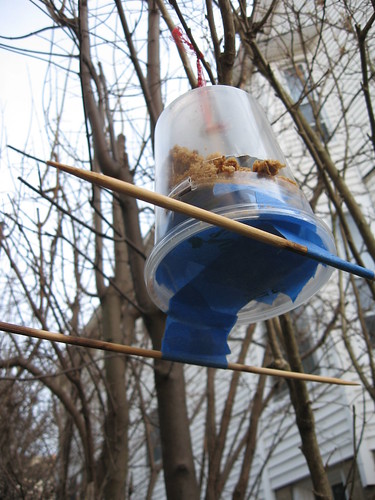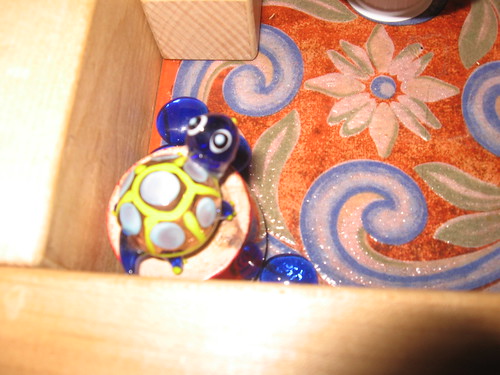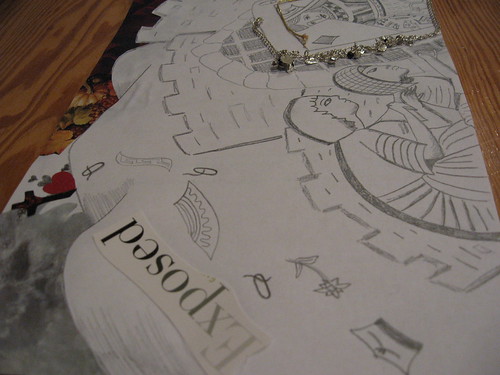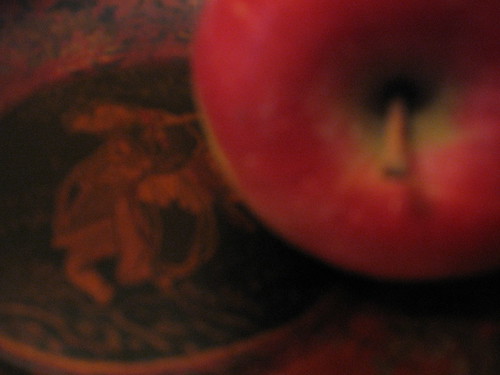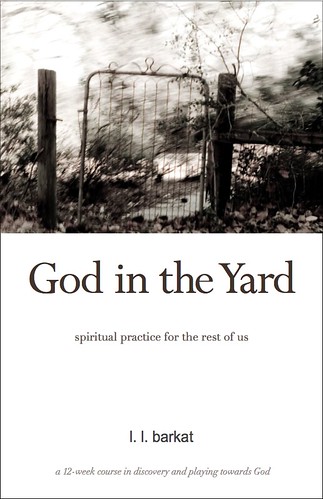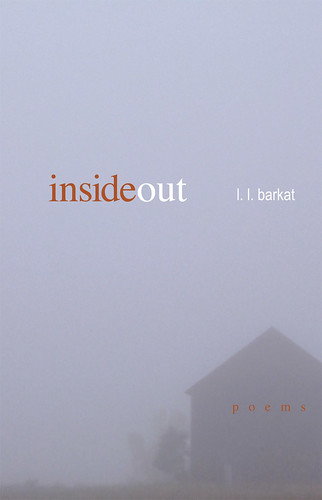Terracing My Own Backyard
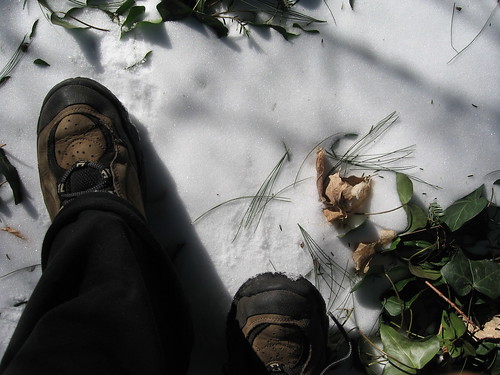
My backyard is a hill, in two directions. It is small, bordered by a rusty chain-link fence, visually squeezed by houses on all sides. At the not-so-far end is a large pine tree, some maples, various odd shrubs, and a patch of ivy beneath it all. I do not like my backyard much. I mostly stay in the house. We have talked about grading the yard and terracing. But something inside me fights that.
Recently, with all this talk of erosion control, smallness of scale, and terracing, I have begun to rethink my backyard— especially since it is a place that has eroded my appreciation for being outside. So, I just read Radical Simplicity and am taking Merkel's suggestion about going to a secret outdoors place each day. (More about this on my my other blog.)
"Lead me into contentment," is my new prayer, as I step into this small space to find what unexpected life may be there. It is my way of terracing my own backyard, working with and shoring up what is there, bringing fruit out of what feels fruitless.
What follows is Sunday night's fruit. It is longer than what I usually post here. But, since I'm going to be away for a week or so starting Thursday, maybe you can come back to read it while I'm gone...
I did not think I would go out to my secret spot today. It is Sunday. I sang in the church praise band this morning, came home to a much-needed nap. We made popcorn and tea and chuckled "sorry" to each other in a game of Knockout (I'm sorry to knock you out, it's my only move!) I won the game. Winners get a kiss, "losers" get a hug. In this way, everybody wins.
I got two kisses from the girls, three from the mister ("No, no!" we cried. "Kiss like you mean it!") We collapsed into a family hug. Dinner was leftover Greek food. Sara played the cello. Then, it was off to bed for the children. And I settled into reading Annie Dillard, Tim Bascom, Lisa McMinn. Somewhere along Tinker Creek, after Dillard sees the frog get eaten by the water beetle, something called me imperceptibly. "Look up."
I looked out the window. Snow falling, thick. How did it silently call me? How could I not answer? I put on gloves and a wool hat, my down coat, and went out into the night. It was light enough to see the world of quiet. I carried my sled to the secret spot and lay down where the snow was falling through the pine. It fell steadily on my face. I could hear it too, "tip, tip - tip, tip, tip."
The snow became like rain where it melted on my skin. Rivulets, like tears, crossed my face. Water flowed into my mouth. The taste of melted night snow. My hat drooped from the weight of the gathering snow, began to pull itself off my head. I closed my eyes.
"What if I just stay here, shiver into sleep?" I thought. The ground was a soft bed beneath me. The air a cool, wet cover. I listened to the squeal of a snowplow turning the corner. All else was silence. "Where are the birds? All asleep. Somewhere in the trees?" Between scattered thoughts, my warm house began to send out its own call, imperceptible at first, but persistent. "Come back inside."
I picked up my sled and walked out of the snow-laden ivy... placed the red plastic onto new-fallen snow. Whooosh... I went down the hill fast, stopped by crashing into the house. It doesn't hurt. I laughed out loud. Smiled to the snow and the night. Put the sled under the covered porch. Turned in time to see my backyard neighbor switch off her kitchen light.
I wondered, "What did she see? Does she think she is crazy, witnessing a dark, lumpy figure sledding down my backyard hill... off into the cover of the hemlocks..."
SSI (Standing Seedlings Invitation): If you post something related to this Seedling post, let me know and I'll link to you.
NEW LINKS TO THIS POST:
Living in a Throwaway Culture
making do
Lead Us photo, by L.L. Barkat.
Labels: Jim Merkel, life management, Radical Simplicity, spirit

